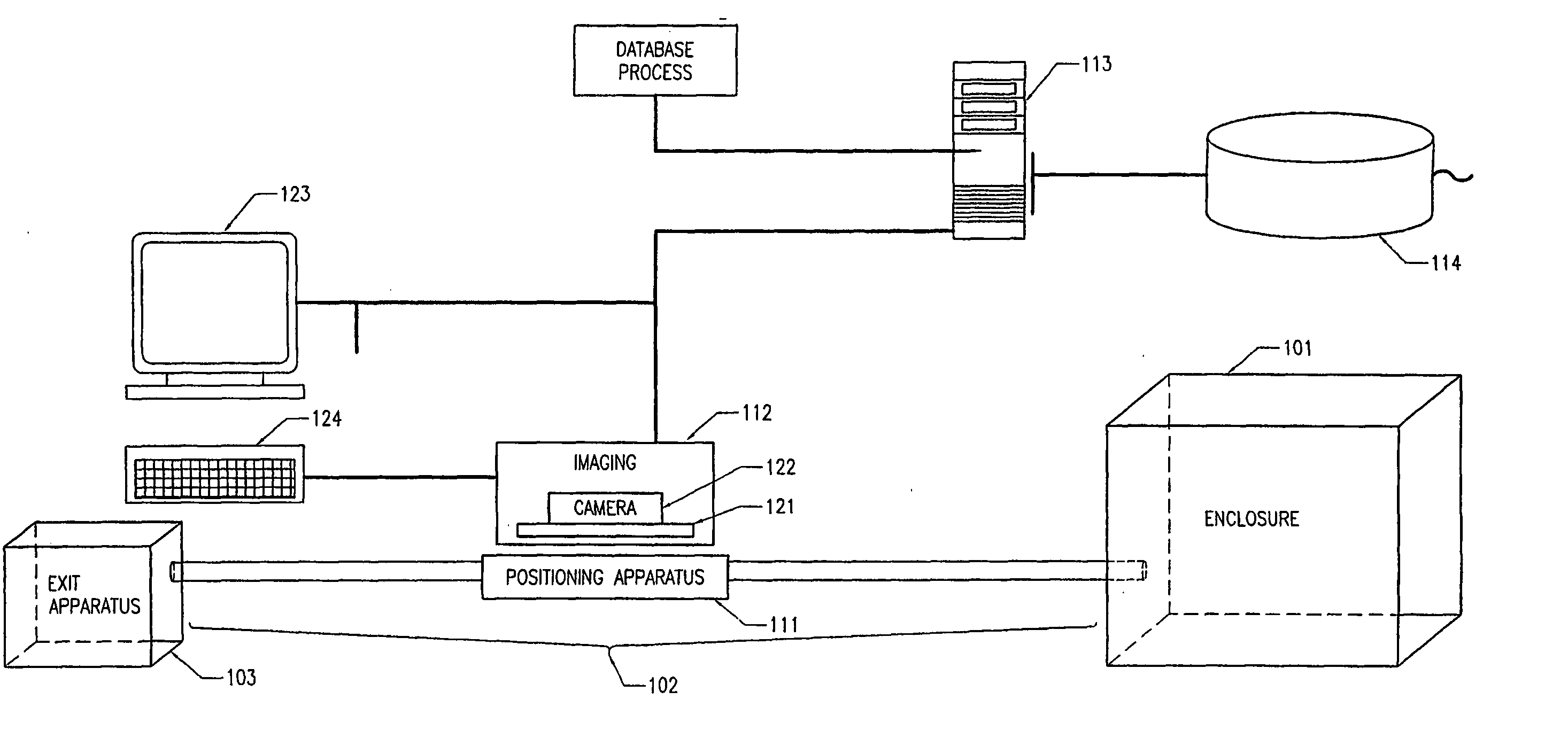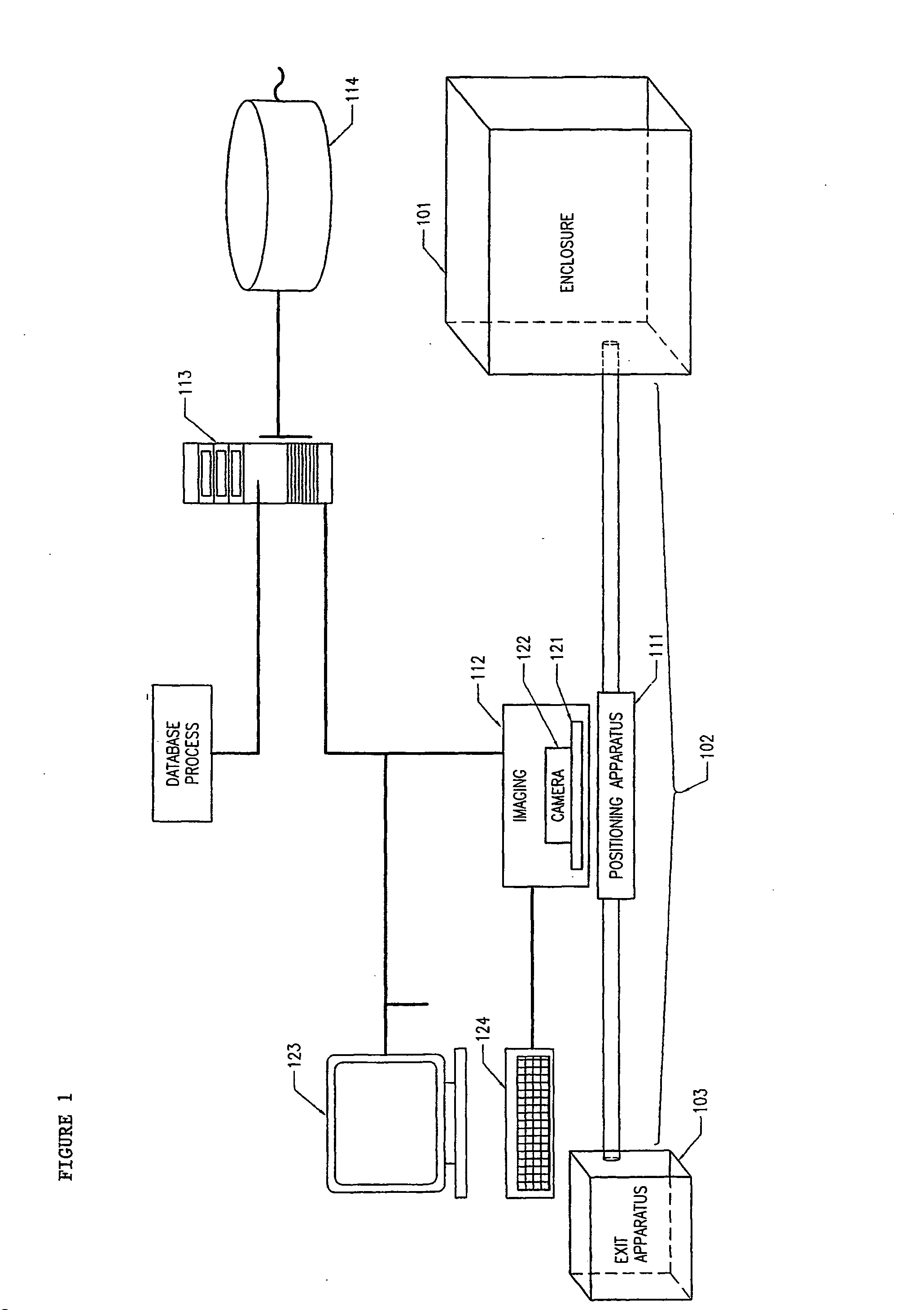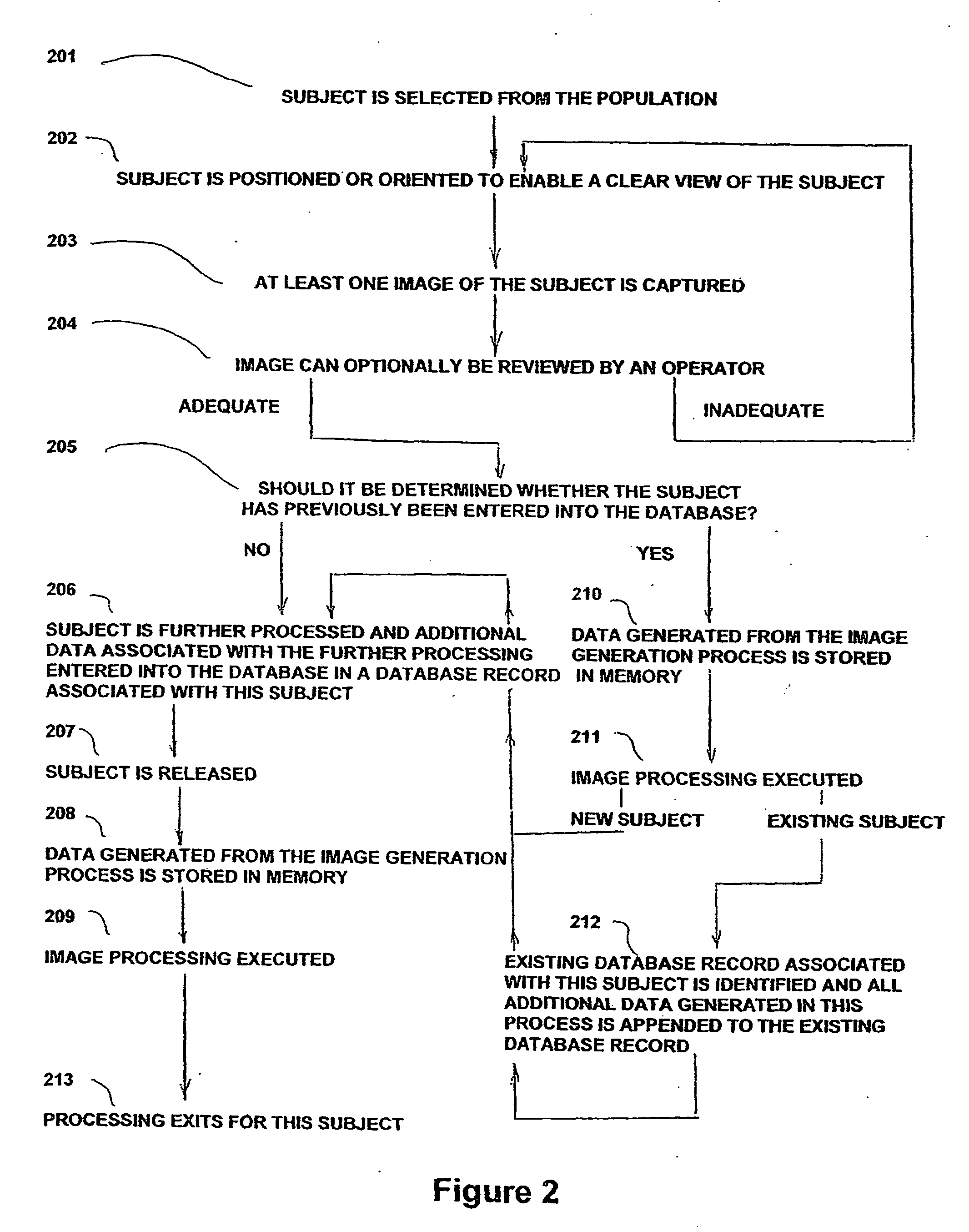System for uniquely identifying subjects from a target population
a technology for identifying and identifying subjects, applied in the field of natural resource management, can solve the problems of laborious re-initiation of data collection and member recognition process, inability to automatically and accurately identify individual members of a particular species in a target population, and inability to extend the knowledge base of a particular herd to any other
- Summary
- Abstract
- Description
- Claims
- Application Information
AI Technical Summary
Problems solved by technology
Method used
Image
Examples
Embodiment Construction
FIG. 1 illustrates, in block diagram form, the overall architecture of a typical embodiment of the present system for uniquely identifying subjects from a target population (termed “subject identification apparatus” herein) and an environment in which it is operable. The subjects are typically confined in a predetermined location, such as an enclosure 101, which enables the operator of the subject identification apparatus 100 to manage and select individual subjects for identification. The enclosure 101 can optionally be connected to a subject isolation apparatus 102 which enables the operator to separate one or more selected subjects from the target population confined in the enclosure 101. When the operator selects an individual subject, the subject is either automatically or manually oriented within the subject identification apparatus 100 for execution of the subject identification process. Once this process is completed, the selected subject is released into an exit apparatus 1...
PUM
 Login to View More
Login to View More Abstract
Description
Claims
Application Information
 Login to View More
Login to View More - R&D
- Intellectual Property
- Life Sciences
- Materials
- Tech Scout
- Unparalleled Data Quality
- Higher Quality Content
- 60% Fewer Hallucinations
Browse by: Latest US Patents, China's latest patents, Technical Efficacy Thesaurus, Application Domain, Technology Topic, Popular Technical Reports.
© 2025 PatSnap. All rights reserved.Legal|Privacy policy|Modern Slavery Act Transparency Statement|Sitemap|About US| Contact US: help@patsnap.com



